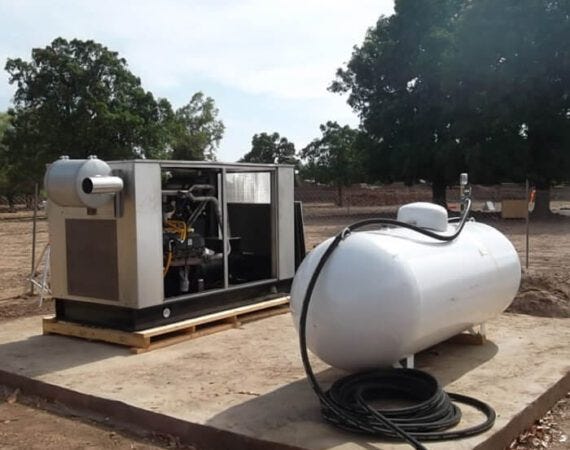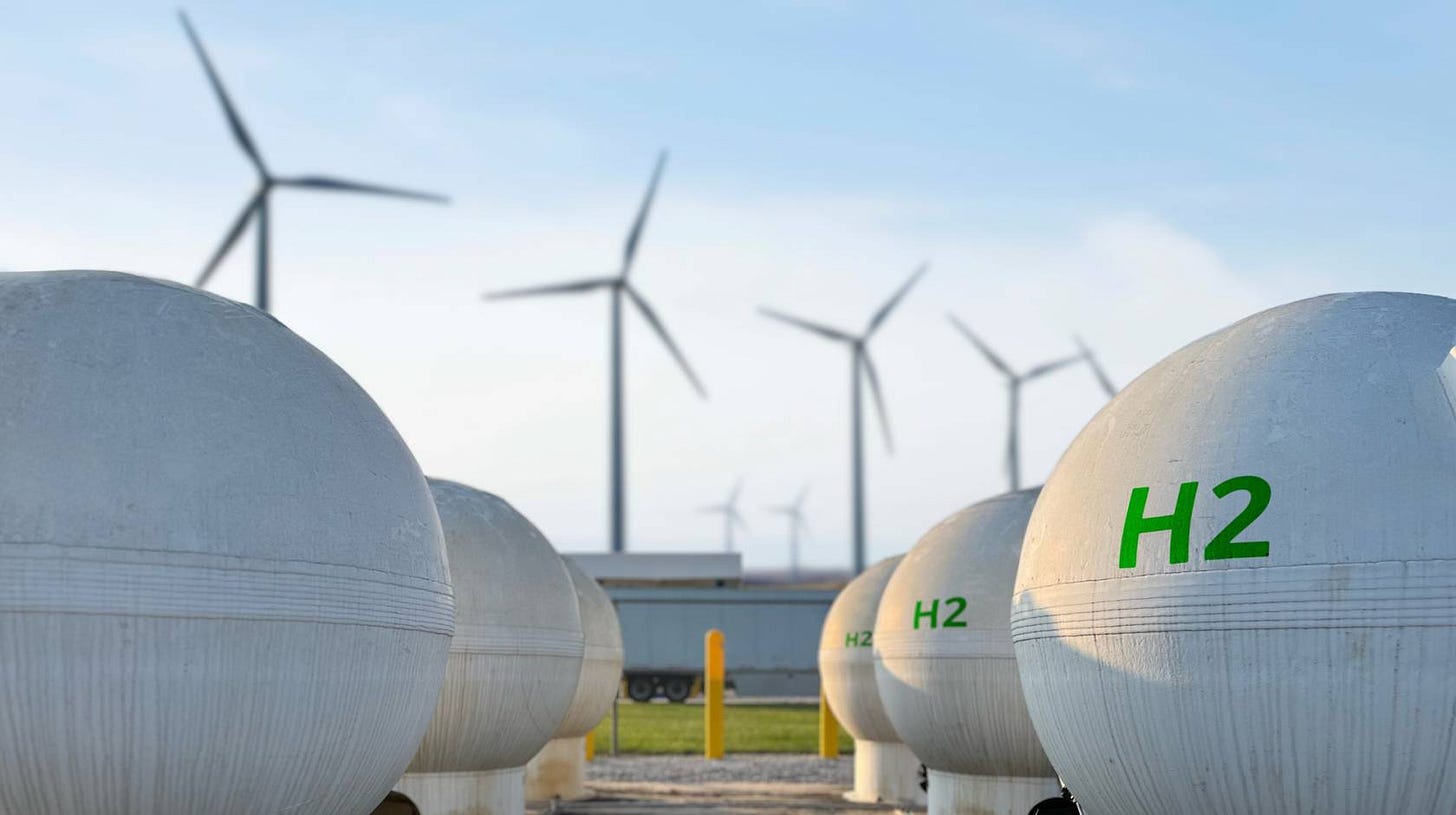Can white hydrogen revolutionise clean energy and aviation fuels?
As green hydrogen faces cost and scalability hurdles, naturally occurring hydrogen deposits could offer a cleaner, cheaper, and more sustainable energy solution.
During last year’s New York Climate Week, I asked the CTO of an e-fuels company what it would take to drastically reduce the cost of power-to-liquid (PtL) fuels, which can be 5 to 7 times more expensive than fossil fuel-based Jet A. His answer was straightforward: “Give me cheap, clean hydrogen, and I’ll give you a cost-competitive product.”
That statement highlights one of the most pressing challenges in the clean energy transition: the high cost of green hydrogen.
The issue has become so significant that Fatih Birol, head of the International Energy Agency (IEA), recently warned that the green hydrogen bubble is at risk of bursting, with only 7% of planned green hydrogen projects expected to come online before 2030.
In an interview with Sustainability in the Air, Viacheslav Zgonnik, a leading expert in hydrogen exploration with over a decade of experience, echoed the e-fuels CTO’s sentiment. “The cost (of the fuel) is basically the cost of hydrogen,” he explained. “Because you need hydrogen, and you need a source of carbon.”
Zgonnik, who previously managed Natural Hydrogen Energy – the company behind the first exploratory hydrogen well in Nebraska – believes the solution lies not in manufacturing hydrogen but in extracting it directly from geological formations.
Zgonnik sees natural hydrogen as the key to unlocking affordable, clean energy. This naturally occurring resource could revolutionise the energy landscape by providing a low-cost, sustainable alternative to traditional hydrogen production methods.
The promise of white hydrogen
The hydrogen industry categorises hydrogen production methods by colour, each representing different environmental impacts and energy sources.
Grey hydrogen, the most common and cheapest form, is produced from natural gas via steam methane reforming (SMR) but emits significant CO2.
Blue hydrogen uses the same process as grey hydrogen but incorporates carbon capture and storage (CCS) to reduce emissions.
Green hydrogen, produced through water electrolysis powered by renewable energy, is the cleanest. It has been hailed as the Swiss Army knife of the energy transition, capable of transforming industries from aviation to steelmaking. However, it’s very expensive – over $5 per kilogram – five times more than the ‘grey’ variety.
Green hydrogen has led critics to question whether the renewable energy needed couldn’t be best deployed elsewhere. For example, according to Lufthansa boss Carsten Spohr, his airline would consume half of Germany’s electricity if it were to use fuels made from green hydrogen.
Now, a new colour is joining the hydrogen rainbow: white hydrogen. This naturally occurring hydrogen, found in underground deposits, could transform the energy landscape.
"Natural means you don't need to manufacture it. If you don't need to manufacture it, you don't need to spend energy. The only expense of energy or money is to extract this hydrogen from the Earth's crust,” argues Zgonnik.
Zgonnik and a growing number of advocates believe that white hydrogen offers a compelling alternative to the green variety. It’s also believed to be plentiful. Researchers from the U.S. Geological Survey estimate that there is enough hydrogen trapped underground to meet the world’s energy needs for 200 years.

The potential scale is already being demonstrated. In Mali, the village of Bourakebougou has been powered by natural hydrogen since 2012, using gas discovered accidentally during water well drilling. In France, geologists recently discovered what could be the largest known deposit to date – potentially 250 million tons of nearly pure hydrogen.
The search for this resource isn't new, and Zgonnik has unearthed natural hydrogen research carried out in the former Soviet Union. “Back in Soviet times, researchers were looking for hydrogen more often because there was a hypothesis of abiotic oil, which was very popular,” Zgonnik explains.
This theory suggested oil could form through non-biological processes, requiring only hydrogen and carbon. While the abiotic oil hypothesis remains controversial and unproven, it spurred significant interest in hydrogen exploration, laying the groundwork for today's investigations into natural hydrogen deposits.
Zgonnik says that Soviet scientists discovered numerous hydrogen deposits across Eastern Europe and Northern Asia as a result of these efforts. However, interest waned as industries weren’t ready. "Today, we have fuel cells, climate goals to reach, clean energy goals... so the industry is ready to accept this hydrogen," says Zgonnik.
Zgonnik believes that white hydrogen could be extracted at approximately $1 per kilogram – a breakthrough price that could make synthetic aviation fuels competitive with traditional fossil fuels.
He expects that white hydrogen will cost even less than grey hydrogen since half of the cost of grey hydrogen is the cost of the SMR process. The other half is the cost of natural gas. “With natural hydrogen, you need to do exploration, drilling, extraction, purification, and transmission – but you don’t need to do the SMR,” he explains. This distinction highlights the potential efficiency.
Beyond its cost and environmental benefits, white hydrogen also stands out for its land efficiency. Unlike solar or wind farms, which can span hundreds of acres, natural hydrogen extraction requires only a small footprint for drilling and extraction.
“Natural hydrogen is one of the most land-efficient renewables because the surface area needed to produce a unit of energy is between 10 to 1,000 times less than other renewables,” Zgonnik claims.
This also makes it an ideal solution for countries facing land constraints or those looking to minimise habitat disruption and preserve ecosystems. Additionally, the industry can utilise existing oil and gas drilling expertise and equipment, providing a possible off-ramp for the oil industry, where its resources can be diverted away from fossil fuels.
From promise to reality: hurdles ahead
While natural hydrogen holds immense promise, some urge caution. In CleanTechnica, Michael Barnard argued that enthusiasm for white hydrogen may be premature, questioning both the scale of discoveries and the practicality of extraction. One major hurdle is that hydrogen is notoriously difficult to store and transport – its low density and highly diffusive nature make it expensive to move over long distances.
Zgonnik proposes a practical solution to these distribution challenges: instead of transporting hydrogen to the source of carbon, the cheapest solution could be to co-locate. This means establishing e-fuel production facilities directly at hydrogen extraction sites, minimising transportation costs while producing valuable end products like sustainable aviation fuel.
According to Zgonnik, regulatory frameworks present another obstacle, with only a handful of countries – such as France, Kosovo, and Poland – providing specific prospecting licenses for natural hydrogen. He emphasises that other countries must quickly adapt their regulations to attract investment and accelerate exploration efforts. “Those that act fast will lead the race; those that delay will miss out,' he warns.”
Meanwhile, sceptics like Stuart Haszeldine, a geologist at the University of Edinburgh, argue that hydrogen's inherently leaky nature makes large-scale accumulation unlikely. Quoted in Yale360, he says, "Hydrogen is very leaky. It leaks almost as fast as it is produced, and certainly over geological time, it's not accumulated to any great extent." However, proponents like Zgonnik view this differently, noting that since hydrogen is constantly being generated and seeping to the surface naturally, we should capture these flows before they are lost.
A new era for clean energy?
As many traditional green hydrogen projects grapple with high costs and feasibility challenges, natural hydrogen is emerging as a potentially compelling alternative for its advocates.
One of the leaders of this movement is Zgonnik, who now heads HyReveal, a French deep-tech startup he founded in 2024. The company is developing specialized tools designed to help explorers locate and characterise hydrogen deposits more efficiently. The aim is to boost the success rate of exploration efforts and accelerate the growth of the natural hydrogen industry, paving the way for a more sustainable and cost-effective energy future.
Major investors are beginning to take notice as well. Bill Gates's Breakthrough Energy Ventures joined a $91 million investment in Koloma, a Colorado-based startup exploring for hydrogen along a 1,200-mile geological formation from Lake Superior to Kansas. Overall, Koloma has raised more than $350 million since 2021, with United Airlines Ventures being one of the investors.
The future: the next energy revolution?
Will the next energy revolution come not from above ground but from deep beneath our feet? White hydrogen, with its potential for low cost, minimal environmental impact, and compatibility with existing infrastructure, could be the key to unlocking a sustainable energy future. If its potential can be harnessed and extracted at scale, it could result in clean, affordable energy for all and drastically alter the economics of aviation and maritime e-fuels.
For February 2025, we’re pleased to feature 4AIR as our exclusive Sponsor of the Month. 4AIR is leading the way with the industry’s first framework to address aviation’s climate impact – offering clear, verifiable pathways to reduce and counteract emissions. Discover their services, including compliance monitoring and The Assure SAF Registry, to advance your sustainability efforts.





